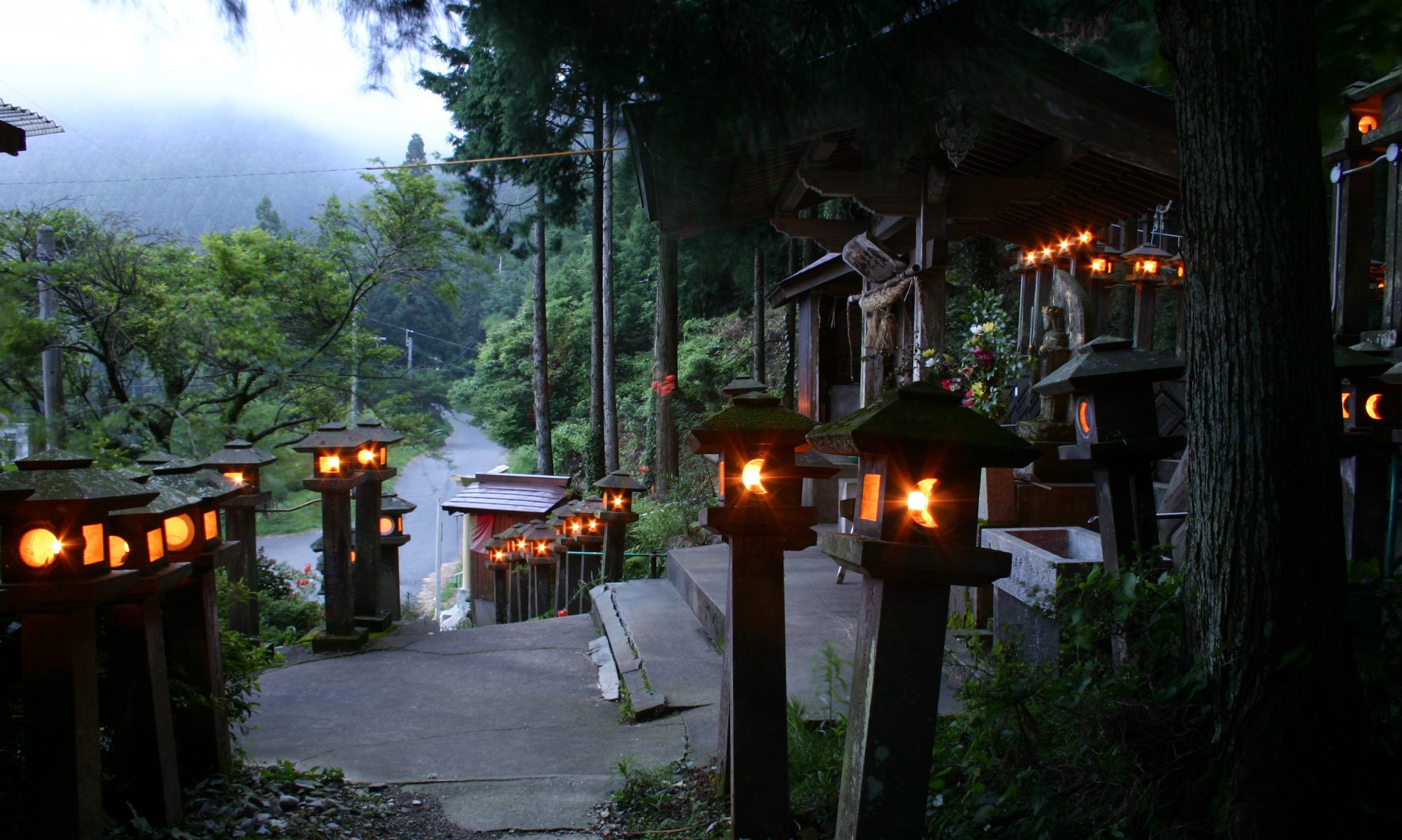Each fall the people of Japan and thousands of visitors to this country look forward to an annual event – the changing of maple leaves to the vibrant colors of autumn. Starting in the north around the last week of September and extending to as late as early December in Kyushu, various Japanese maple varieties put on a show of color that is rivaled only in a few places in the world.

Kyushu, despite its southern latitude, harbors some very nice fall leaf viewing from early November up to the first week of December. The best places to look for them are in the remaining natural forests at elevations above 400 meters, particularly along Kyushu’s central mountainous region. Another good option is to look for them at the thousands of shrines and temples that dot the landscape. Even the deepest urban centers are home to these holy places, and almost invariably you can see at least some fall color in the surrounding gardens and woods.
In this pictorial essay the focus is on Raizan Sennyoji Daihioin Temple (hereafter referred to as Raizan Sennyoji) in Fukuoka Prefecture located just southwest of the Fukuoka City metropolitan area. Raizan itself is a 954.5 meter tall summit found along the main ridge line of the Sefuri Mountain group, straddling the border of Saga and Fukuoka Prefectures. The temple is found on its northern flank deep in a valley at around 340 meters elevation near the headwaters of the Raizan River. Among its dozen or so temple buildings is a lovely garden and woods that are home to many maple trees, the subject of this article.







If you find yourself in the Fukuoka City area in mid November I suggest you make a visit to this beloved temple. You’ll have to pay a 400 yen entrance fee to enter the main grounds, but that will also give you a shot at viewing the thousand arm Buddha, and the inner sanctuary where this statue resides. If you are lucky, you’ll even get to sit in on an actual ceremony with a monk chanting sutra – usually a blessing for children, people in need, and even you! It is an interesting experience especially if you’ve never been to a Buddhist ceremony. All tours are given only in Japanese, but they have an explanatory information sheet in English (that is mostly readable) covering the basics about the temple and its history.
To get there it is easiest if you go by car. Be warned however, in peak fall season (usually mid November) there is a traffic jam halfway up the mountain as early as 10 AM, so go early to miss the crowds. We got there around 10 AM and had to wait a half hour in the car before we could find a space to park on the side of the road. Then we hiked up about one kilometer to the temple. If you wait for a space at the temple (they have around 120 spaces), it could take an hour or more of creeping up the mountain before you get one.
Alternatively, you can take a bus to Raizan from JR’s Chikuzen Maebaru Station. Get off at the Raizan Kannon Mae stop (about 20-30 minutes depending on traffic). The temple’s address is 626 Raizan, Itoshima City, Fukuoka (TEL: 092-327-4948, but Japanese only). The temple’s operating hours are 9 AM to 4:30 PM daily. Their home page is here.

Dear Sir,
I am not very good at this but trying to teach myself and my children more about trees. We live in Jingumae so very lucky to be beside the shrine and the glorious forest. With the close down etc., we (kids are 7) trying to learn a tree a day or identify them. the not good bit is after a while a lot of the leaves etc., from a distance can look the same and I can morph barks into each other.
Luckily we have identified the Camphor tree and a couple of others from your website. Am I missing something though in that not all trees are listed. There are a number of trees I can’t find either on your site which is excellent by the way.
Also, going forward and assuming the world gets over this pandemic do you need volunteers for work in the forests or any help? If so I would love to join in and contribute.
thank you and sincerely.
John Bowman
Hey John, on this site I have barely touched upon all the trees in just southern Japan, let alone the subtropical islands or cold temperate forests in the north. If you check out my YouTube channel you’ll see a lot more species, the only rub being they are spread across several videos. You can find them though in my nature walks and video series focusing on the seasons. That aside, just go to a local bookstore and get a good wild plant guide. Usually they are broken into categories – “wild herbs”, “trees and shrubs”, and so on. They usually have scientific names in them so you can do a web search if your Japanese isn’t too keen (mine isn’t!).
I am not an organization, but rather an individual. While I did study biology in university, I am not a trained botanist either. I am simply a person who loves the natural world, and especially plants! I have no affiliation with government either. Sad to say that Japan’s forests are in pretty sorry shape over much of the country, but are still quite bio-diverse regardless. Mismanagement, overpopulation by herbivores (especially deer) and the loss of natural forests before and after WWII all contribute to the current situation. It is a complex subject, and honestly I can only speak for the area I live in directly. Trips to other parts of the country however indicate that the problem is not localized to southern Japan.
Thanks for the comment and interest! Tom